Taamra Iyasus ተአምረ ኢየሱስ (The Miracles of Jesus) c.1725
Ink and opaque watercolour on vellum. | 34.5 x 29.5 cm (whole object) | RCIN 1005079
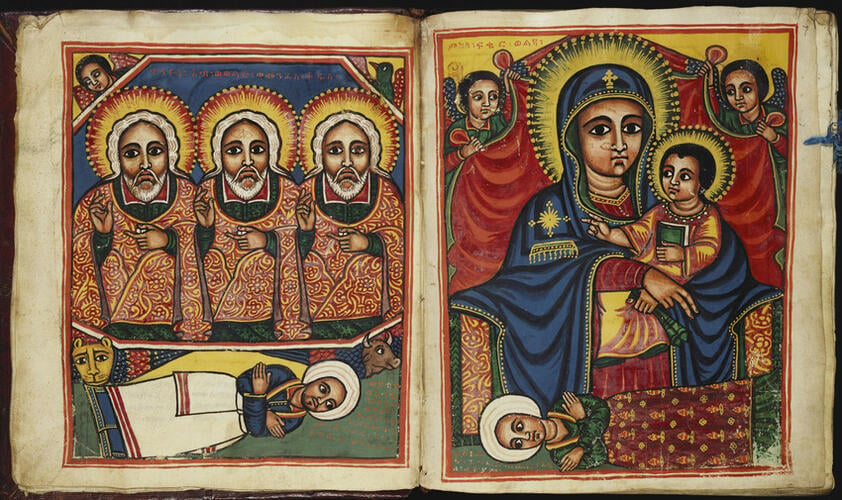

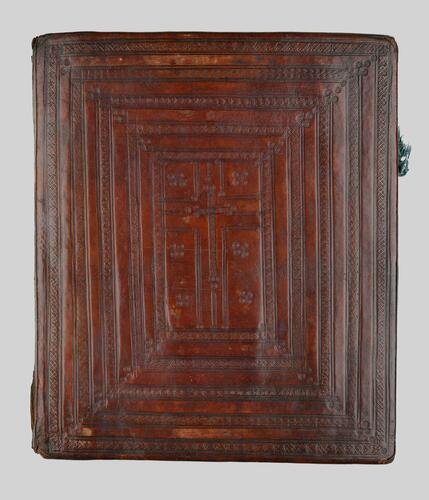
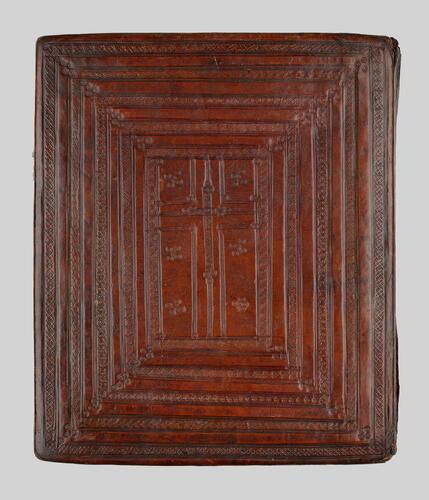

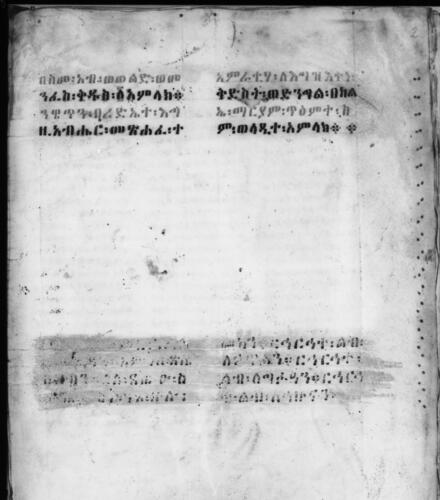
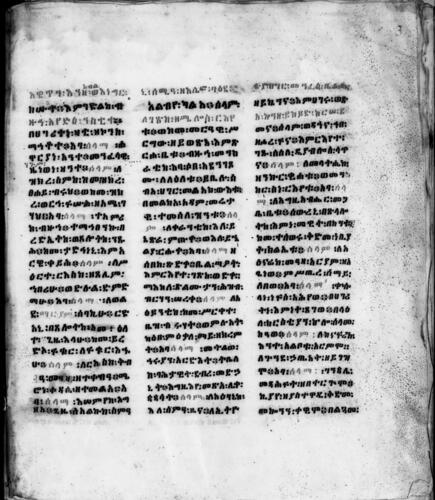

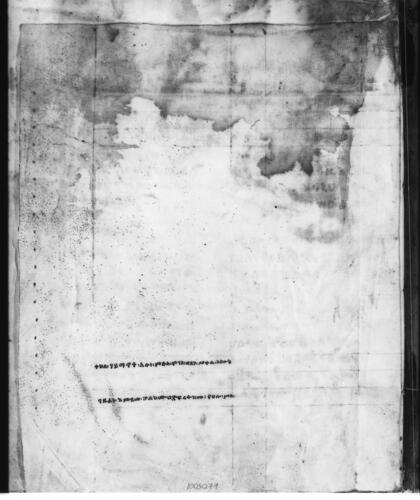
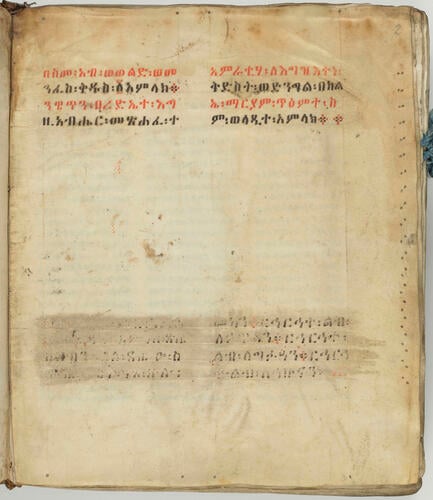
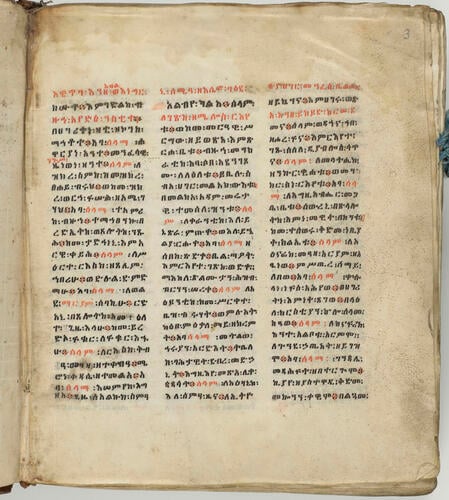
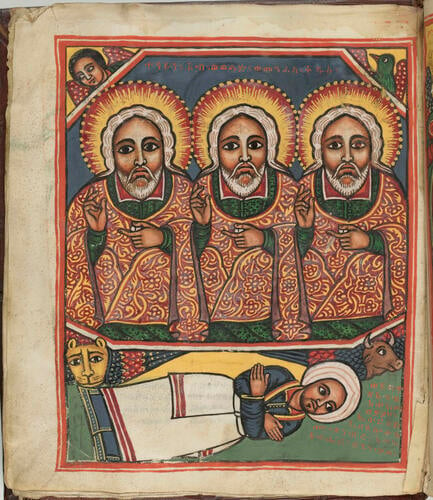
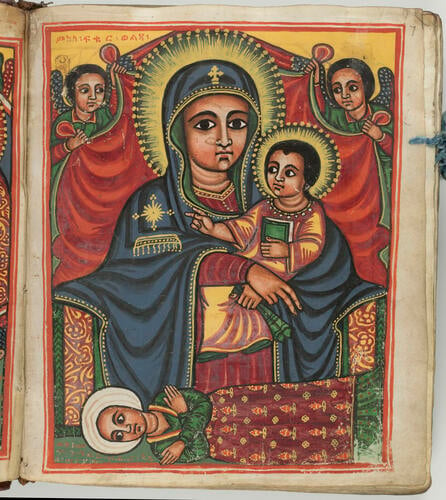
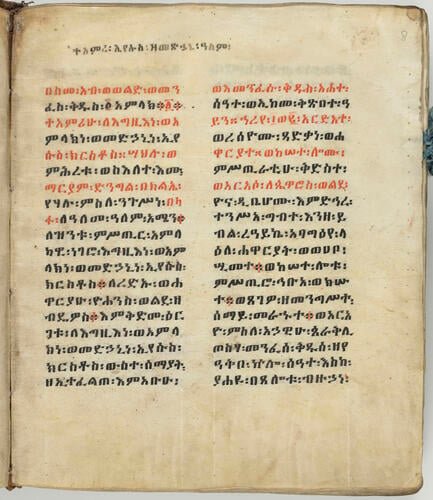



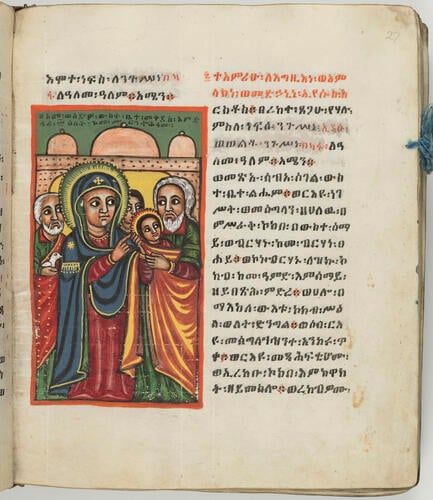

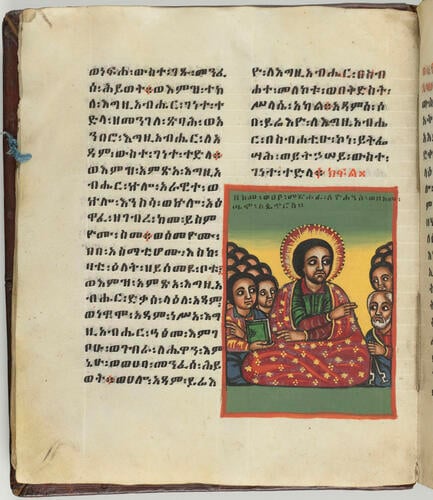
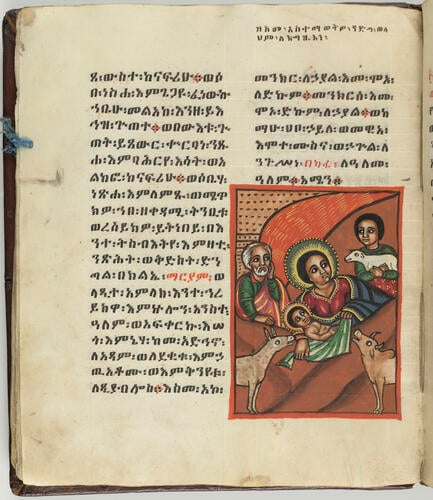
-
An Ethiopian manuscript of the Miracles of Jesus written in Geez, the ancient liturgical language of the Ethiopian church.
The Miracles of Jesus is one of the apocryphal books of the Bible which do not feature in the canonical text but have always been accepted as undisputed elements of the Bible in its Ethiopian (Geez) translation. The Ethiopian Bible is thought to have been translated into Geez largely from the Greek and Syriac texts of the Syrian church from the 4th to the 7th centuries, likely by Syrian monks who founded monasteries in Ethiopia.
The Miracles of Jesus (ff. 8-156, written in a large clear hand) consist largely of the Infancy Gospel of Thomas, describing the Miracles Jesus performed as a young child. This manuscript also includes the beginning of the Book of Miracles of the Virgin Mary (f.2); a hymn to Abba Salama, the fourteenth century head of the Ethiopian Orthodox Church (ff. 3–6) and some Miracles of the Ethiopian Saint Abuna Takla Haymanot (ff. 156–9); all later additions written in different hands.
References to King Bakaffa (d.1730) supports the early 18th century date of the main text. This section of the manuscript opens with a full page painting of the Trinity labelled ‘Father, Son, and Holy Ghost’ (f. 6v) opposite a full page picture of the Virgin Mary and Child (f. 7r). Below the figures are portraits of the manuscript’s patrons, a husband and wife, prostrated at their feet. 61 other paintings illustrate the text including a full page image of the crucifixion (f.121v).
The bindings comprise wooden boards covered with stamped leather tooled with large crosses at the centre and the inner cover has a textile inlay. The manuscript was rebound and re-backed by the India Office in the late 19th century.
This manuscript was among a group of an estimated 1000 manuscripts acquired from churches across Ethiopia by Emperor Tewodros II (d. 1868) intended for the church and library he planned to build at Maqdala, his fortress in Northern Ethiopia. In April 1868 British forces led by Lieutenant General Sir Robert Napier laid siege to the fortress to secure the release of British hostages held there (see RCIN 2500869) and Tewodros took his own life. Tewodros’s manuscripts, then stored in huts near his temporary church at Maqdala, were among the items subsequently auctioned as spoils of war. Many of these (approximately 400) were bought by Richard Holmes (see RCINs 917350-2 and 922419) who had been sent by the British Museum as part of the Abyssinian Expedition specifically to acquire antiquities and manuscripts in Ethiopia. Richard Holmes presented sixteen of the manuscripts to Queen Victoria who retained six for the Royal Library (RCINs 1005079-1005084) and in 1869 offered ten back to the Trustees of the British Museum. In 1973 those manuscripts were transferred to the British Library.
See Edward Ullendorff 'The Ethiopic Manuscripts in the Royal Library, Windsor Castle' (Rassegna di Studi Etiopici; v. 12, June-December 1953)Provenance
Acquired by Emperor Tewodros II (r. 1855–1868) for the Church of Madhane Alam at Maqdala. Bought by Richard Holmes during the British expedition to Ethiopia in 1868 and later presented to Queen Victoria.
-
Creator(s)
(nationality)Acquirer(s)
-
Medium and techniques
Ink and opaque watercolour on vellum.
Measurements
34.5 x 29.5 cm (whole object)
Category







